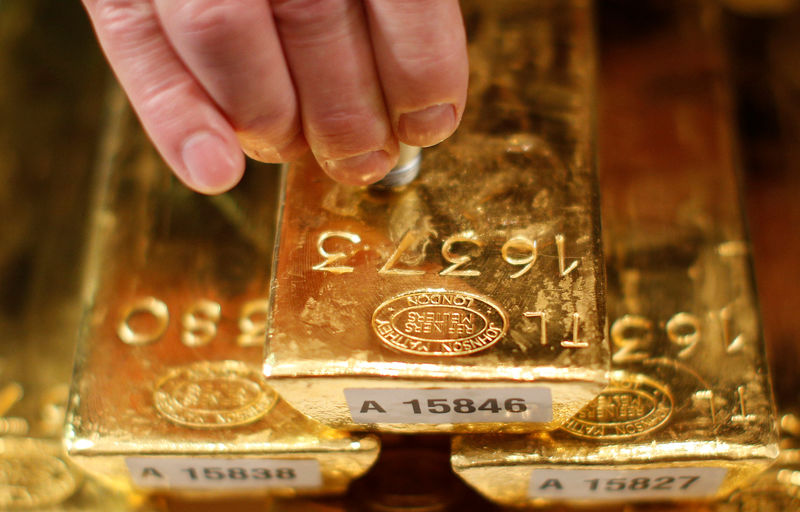Investing.com - Gold prices edged lower in choppy trade on Friday as investors took profits after the metal’s rally to three-and-a-half month highs earlier in the week and as the dollar pushed higher despite a weaker-than-expected U.S. jobs report for December.
Gold futures for February delivery settled down 0.11% at $1,320.20 on the Comex division of the New York Mercantile Exchange.
For the week, the precious metal was still up 0.99%, its fourth consecutive weekly gain.
The U.S. economy added 148,000 jobs in December, the Labor Department reported, well below the 190,000 forecast by economists, while the unemployment rate held steady at 4.1%.
Employment data for October and November data were revised to show 9,000 fewer jobs created than previously reported.
Earnings rose by an annualized 2.5% in December, as expected, but November’s wage growth was revised down to 2.4% from 2.5%.
The dollar briefly slid to the day’s lows following the report, before regaining ground.
While the report was disappointing given the miss in jobs growth the rise in wage growth was a bright spot.
The jobs data was seen as unlikely to alter investor expectations for a rate hike by the Federal Reserve at its March meeting.
Fed funds futures have priced in a more than 67% chance the U.S. central bank will hike interest rates in March, according to Investing.com’s Fed Rate Monitor tool.
Gold is highly sensitive to rising U.S. interest rates, as they increase the opportunity cost of holding non-yielding bullion, while boosting the dollar, in which it is priced.
Elsewhere in precious metals trading, silver was little changed at $17.26 a troy ounce late Friday, after earlier touching a six-week high of $17.32 and ended the week with a gain of 1.62%.
Platinum was up 0.48% at a three-and-a-half month peak of $974.90, to end the week 4.31% higher.
Palladium was down 0.67% to $1,087.40 an ounce late Friday after rising to a record high of $1,101.30 in the prior session. For the week it rose 3.06%.
Palladium posted the strongest increase among precious metals in 2017, advancing 57% amid concerns over the supply outlook.
Among base metals, copper ended Friday down 0.95% at $3.232 a pound and was down 2.23% for the week.
In the week ahead, gold prices will remain vulnerable to any rebound in the greenback, with investors turning their attention to U.S. inflation data and comments by a number of Fed speakers for further clues on the timing of the next rate hike.
Ahead of the coming week, Investing.com has compiled a list of these and other significant events likely to affect the markets.
Monday, January 8
Financial markets in Japan will remain closed for a holiday.
The UK is to release an industry report on house price inflation.
The Bank of Canada is to publish its quarterly business outlook survey.
Meanwhile Atlanta Federal head Raphael Bostic and San Francisco Fed head John Williams are both due to deliver remarks.
Tuesday, January 9
Australia is to publish data on building approvals.
Germany is to report on industrial production and the trade balance.
The euro zone is to report on the unemployment rate.
Wednesday, January 10
China is to release data on producer and consumer price inflation.
The UK is to report on manufacturing production and the trade balance.
Canada is to publish figures on building permits.
The U.S. is to report on import prices.
Thursday, January 11
Australia is to produce data on retail sales.
The European Central Bank is to publish the minutes of its December policy meeting.
Canada is to release data on new house price inflation.
The U.S. is to publish data on producer price inflation and initial jobless claims.
Outgoing New York Fed President Bill Dudley is to deliver remarks at an event in New York.
Friday, January 12
China is to report on the trade balance.
The U.S. is to round up the week with what will be closely watched data on consumer inflation and retail sales.
